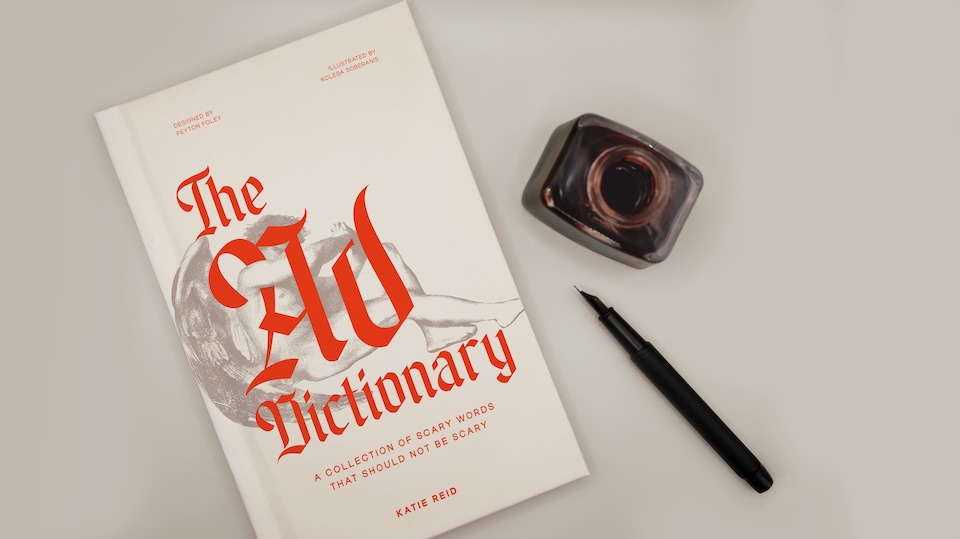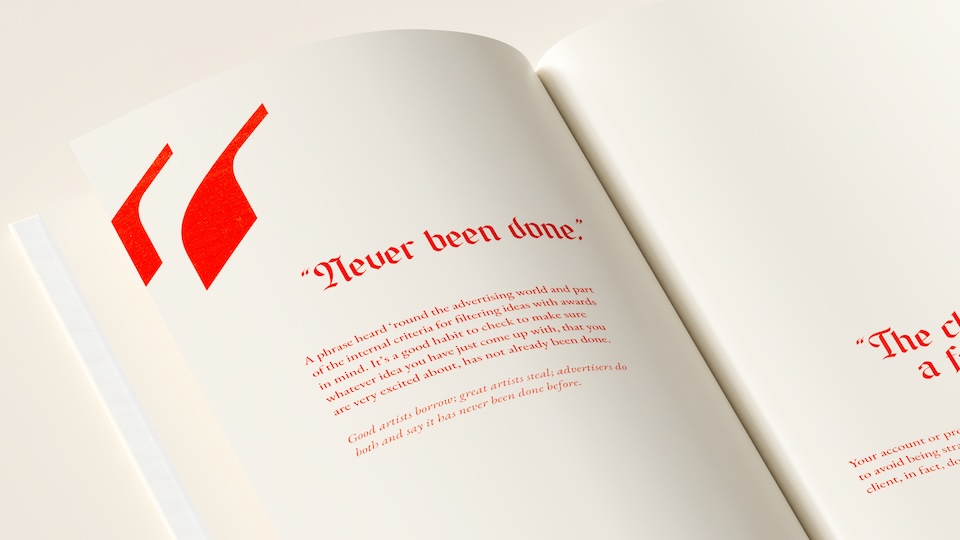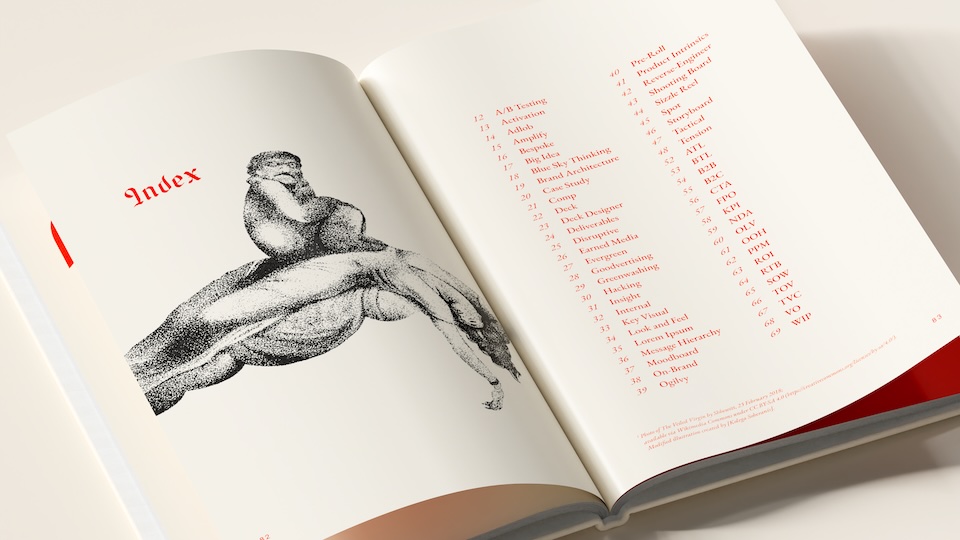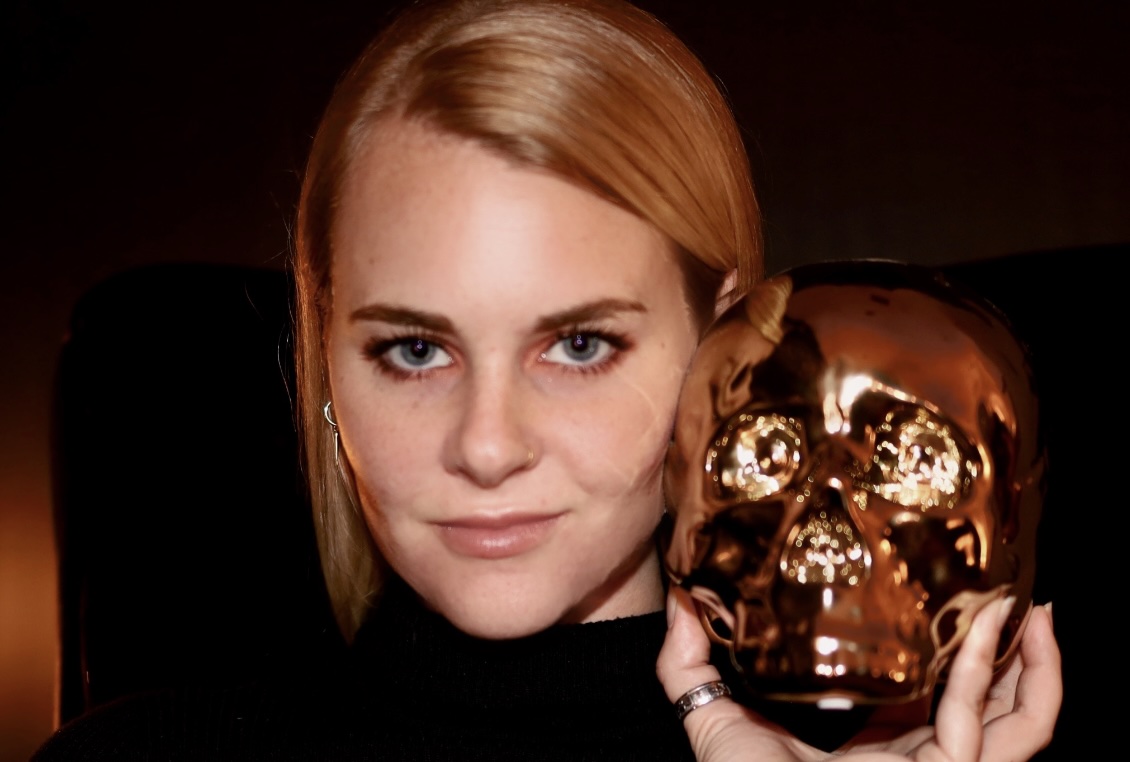This Dizzy Dictionary Puts Adland's Quirky Jargon Into Its Proper Context
A dossier for the dazed and damned. It's kind of Halloween-y

I didn’t always intend to write a dictionary. I just got tired of watching brilliant newcomers freeze at the word “deliverables.”
It started in the classroom. After years of working in advertising, surrounded by jargon like “bespoke,” “WIP” and “actionable,” I stopped noticing how absurd it all sounds. But when I began teaching, everything sounded different. I’d hand out a brief, and someone would ask, “What’s a deck?” while everyone else would quietly sigh with relief.
That’s when it clicked: these students, and even interns and juniors, aren’t confused about the work; they’re confused about the language.
Advertising loves to talk about opening doors—but we rarely acknowledge the linguistic velvet rope just inside the lobby. We say “an idea with legs” like it’s a natural phrase. We turn nouns into verbs, verbs into abstractions and then package it all like everyone was born fluent.
So I created The Ad Dictionary: A Collection of Scary Words That Should Not Be Scary. Part survival guide, part creative exorcism.

It’s a collection of the industry’s most cursed terminology, translated into plain speech with a sense of humor and a touch of horror. It’s the kind of book you gift an intern or student, keep on your desk or hide in your work bag on day one.
The tone is gothic, not just for the drama (though I do love the drama), but because that’s how this language feels to newcomers. Haunted. Ritualistic. Slightly dangerous. “Sizzle reel” sounds like the start of an incantation. The aesthetic gave me a way to embrace that fear while deflating it. Also, my nickname at work is Scary Mary, so it tracks.
Here’s a sample:
ADLOB
/AD-lob/
noun
Short for “ad-like object.” This is a wannabe idea, really just to convey the concept. Not quite there but on the precipice of coming to life: “We are not totally sure where these words and images could go. Maybe a cool OOH61 or print ad. Right now, this is just an adlob.”
Wait, there’s more:
BESPOKE
/bih-SPOHK/
adjective
The advertising buzzword of the year. It is often used to describe a media build, one that is custom to the idea. This can fall under the category of “never been done.” Example: “For this campaign, we will start with a bespoke OOH that has never been done before. We are already in contact with a special-build vendor. Imagine: a billboard with a massive, 3D-printed version of an even bigger billboard just for our logo. How? That’s a problem for the vendor.”
The dictionary came to life with the help of some brilliant collaborators: Peyton Foley’s art direction found the line between elegant and eerie. Kolega Soberanis’ halftone illustrations drew on classic gothic imagery. And Sofia Skiendziel’s visuals made the whole thing feel less like a reference book and more like a grimoire.
Learn more or buy your copy here from $5 for ebooks to $40 for a signed copy inked in blood, sweat and tears.
The book is funny, sure. But it’s also serious. Because ad-speak isn’t just confusing, it’s exclusionary. It whispers, “You don’t belong here,” to the people we claim to want in the room. Especially those from nontraditional backgrounds and those just starting out.
So if this dictionary helps even one student or intern or junior feel a little more confident, or helps one seasoned vet rethink saying the ever-ambiguous “there’s something there.” I think that’s a win.
If we want to build a more inclusive industry, we can start by making sure everyone’s speaking the same language or at least understands what the hell “adlobs” are.




 Events
Events